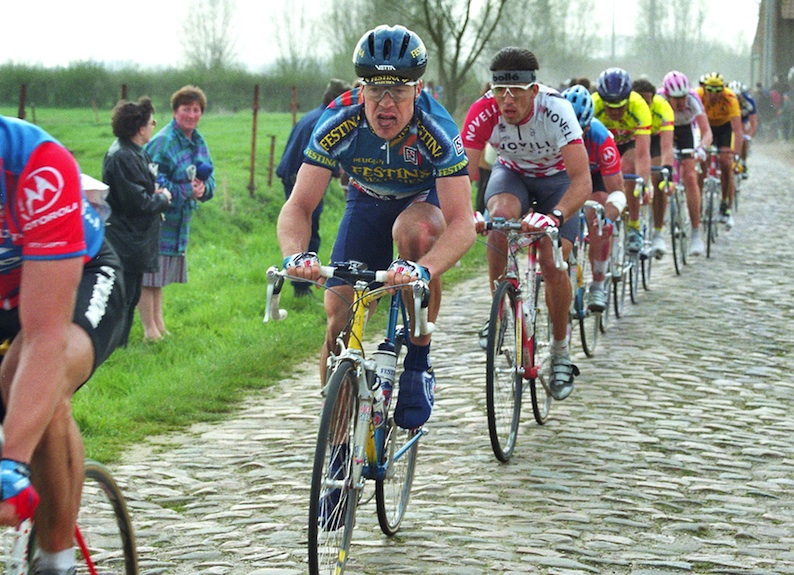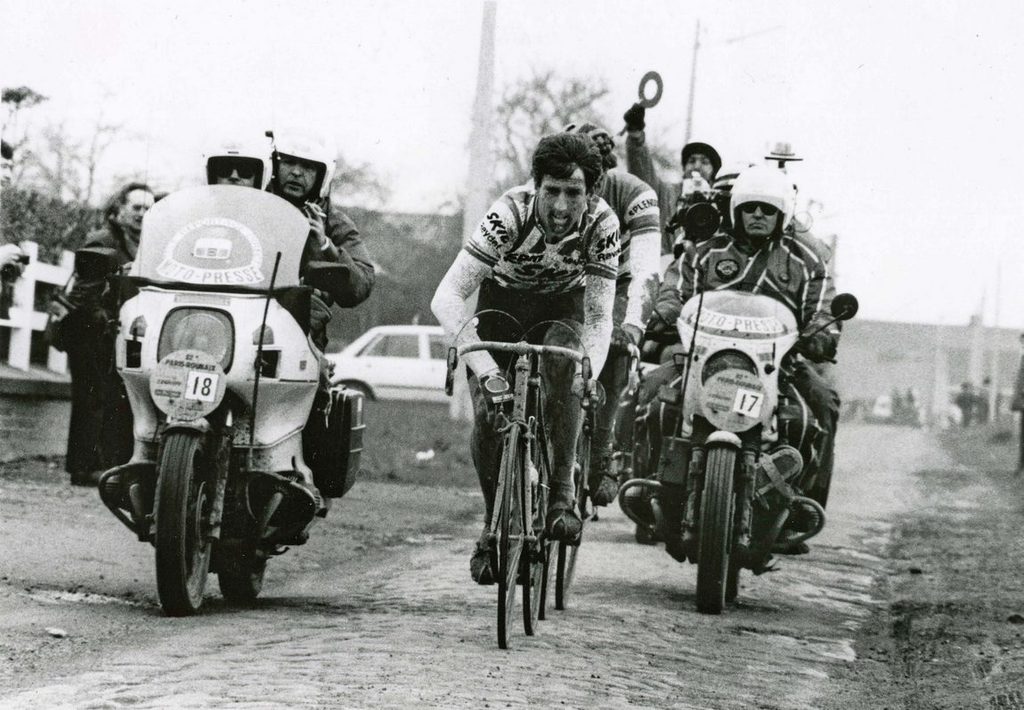Dirty Innovators
Ok all you roadies, listen up. You’re not gonna like what I’m about to tell you, but it’s the truth. And sometimes, the truth hurts. You ready?
Road cycling owes a lot to mountain biking.
“You what?!” I hear you screaming at the monitor in disgust. “Road cycling has been around for more than a hundred years, and the mountain bike for about thirty!” Well, nice theory, but bikes were ridden on dirt long before their tyres ever saw a sealed surface. But this isn’t about the chicken or the egg, it’s about the way technology crosses over from one discipline to another, and how similar, yet different aspects of the same sport inter-breed, cross pollinate and spawn innovations that better the machines we ride and the kit we wear. And I hate to be the one to break it to you, but that sleek road machine you’re riding now probably wouldn’t exist if it weren’t for our dirtbag cousins.
It all took off in the early 90s; the mountain bike was undergoing its own metamorphosis, rapidly dropping the ‘klunker’ heritage and becoming lighter, stiffer and racier. The geometry was changing from slack and raked-out head angles to more sharply handling, longer and lower front ends. A little like road bikes, granted. The first big change up front though was the oversized headset and steerer tube combo, dubbed the Avenger by Tioga, the first company to bring it to market. The steerer increased from 1 inch diameter to 1 1/8″, giving the front of the bike more precise steering and a more solid feel over rough terrain. Soon, Dia Compe came up with the AHeadset, doing away with the threaded steerer and headset in favour of a threadless system held together by a stem clamped over the smooth steerer tube. There’s not a road (or mountain) bike to be seen with a threaded front end these days.
Having a bigger steerer attached to rigid fork blades made some difference to the mountain bike, but even more was needed up front to tame the terrain and reduce the pounding that riders’ arms would take on proper off-road trails. While some weird and wonderful contraptions briefly held court (like the Girvin Flexstem, as terrifying as it was), the obvious solution was to borrow technology from the motocross crowd, and the first suspension fork for bicycles was born. The Rock Shox RS1 was as rare as hen’s teeth, but when one was spotted in the wild the geek-out factor went through the roof, and any rider lucky enough to have one bolted to the front of their bike would be accosted for twenty minutes and bombarded with questions about “how it works”. In the space of a year, there were three or four different iterations of suspension forks on the market, most of them completely unaffordable to the Regular Joes that rode in the dirt.
Looking back at the suspension tech of those days now, the word ‘archaic’ springs (pardon the pun) to mind. The modern mountain bike is an engineering marvel, and I’m as amped on new technology now as I was in the early 90s. The sport has continued to push the boundaries and is constantly evolving. And road cycling has benefitted greatly. We’ve all seen the Rock Shox Ruby forks that appeared on the bikes of Paris-Roubaix for a few glorious years, even taking a couple of wins in the Queen of The Classics. The MTB forks of the day were mostly heavy, elastomer sprung and undamped, giving the effect of a pogo stick on the front of the bike. To try and put one on the front of a road bike was preposterous at best, a blasphemous disaster at worst. Then there were the failed attempts at rear suspension which disappeared as quickly as they came. But riders and teams were willing to try anything to tame the brutal cobbles of the Hell of the North, and if you didn’t have a Ruby fork then you were behind the 8-ball straight away. The fact that the bike would bounce around under pedalling load on the smooth roads was outweighed by the comfort and control on the cobbles.
But roadies being roadies, the extra weight and inefficiency soon rendered the Ruby detrimental to the performance of the bikes… but that comfort was welcome. How to get some shock absorption and keep the weight low? Carbon fibre forks were conceived, giving a smooth ride up front on the stiff yet light aluminium frames that were taking over the peloton at the time (another innovation gleaned from the mountain bike). If it worked up front, then why not at the rear too? Carbon seatstays were bonded onto the back ends of just about every bike that came out in the mid 90s. If it worked for the fork and stays, then why not the whole frame? The carbon bikes so ubiquitous today were spawned from the need for a smoother ride, without the weight and complexity of suspension. Thanks, mountain biking.
Now, check out Hodgey’s helmet in the lead photo. Look kinda familiar? Well, helmets pretty much came from mountain biking, and the early examples looked just like that; round, few vents, not pointy at the back. And what do we have now? Round, sparsely vented, not-too-pointy ‘aero’ road helmets, that we are all crying about being ugly and unnecessary. But how cool does Hodgey look? Badass! It’s only a matter of time before we’re all wearing them, and possibly with visors. (In the 1999 P-R, several riders wore helmets with visors, including 3rd placegetter Tom Steels and Frank Vandenbroucke.) Okay, maybe I’ve gone too far there, but I saw a guy riding in an Air Attack the other day, and by Merckx did I think he Looked Pro! These helmets will be the norm sooner rather than later; after all, don’t we take our cues from the Pros?
There have been numerous advances that have come from mountain biking and are now seen as standard on road bikes; removable face plates on stems, wider profile rims, lightweight saddles, tapered head tubes, integrated headsets, external cup/press-fit bottom brackets, oversize bar diameters (and let’s not forget road disc brakes. You can’t fight it!). Black socks. Tall socks. If it wasn’t for the mountain bike and the innovators working in that industry, we might still be riding lugged steel frames with downtube shifters. Which would be ok with me, as long as I can still have my off-road wonderbike.
[dmalbum path=”/velominati.com/content/Photo Galleries/brettok@velominati.com/mtb tech/”/]


